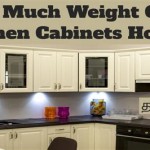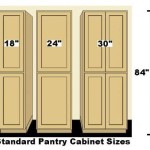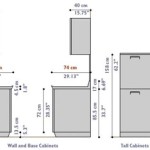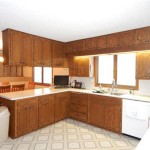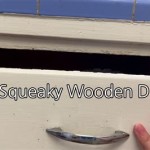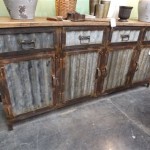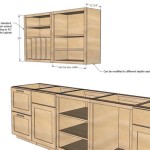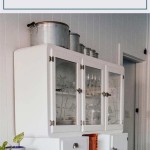Polyurethane Finish for Kitchen Cabinets: Durability and Aesthetics
Kitchen cabinets are a significant investment, both functionally and aesthetically. Protecting this investment with the right finish is crucial for longevity and maintaining the desired look. Polyurethane finishes are a popular choice for kitchen cabinets due to their durability, versatility, and ability to enhance the wood's natural beauty or provide a smooth, painted appearance. This article will explore the various aspects of polyurethane finishes for kitchen cabinets, including their properties, application methods, advantages, disadvantages, and considerations for selecting the appropriate type.
Polyurethane is a synthetic resin that forms a hard, durable, and chemical-resistant coating when it cures. It is available in various formulations, including oil-based, water-based, and solvent-based options, each offering distinct characteristics. This versatility allows homeowners and professionals to select a polyurethane finish best suited for the specific needs of their kitchen cabinets and application environment.
The primary function of a polyurethane finish is to protect the cabinet surfaces from the wear and tear of daily use. This includes resisting scratches, stains from food and beverages, moisture damage, and the effects of cleaning agents. Its durability makes it a long-lasting solution for preserving the appearance and integrity of kitchen cabinets.
Understanding the Properties of Polyurethane Finishes
The properties of a polyurethane finish are critical in determining its suitability for kitchen cabinets. Key considerations include its hardness, flexibility, chemical resistance, UV resistance, and VOC (Volatile Organic Compound) content.
Hardness: Polyurethane finishes are known for their hardness, which provides excellent protection against scratches and abrasion. A harder finish is generally more resistant to physical damage, making it ideal for high-traffic areas like kitchens. However, excessive hardness can lead to brittleness, making the finish more prone to cracking under stress.
Flexibility: While hardness is desirable, a certain degree of flexibility is also important. Kitchen cabinets can expand and contract with changes in temperature and humidity. A flexible polyurethane finish can accommodate these movements without cracking or peeling. Oil-based polyurethanes tend to be more flexible than water-based options.
Chemical Resistance: Kitchen environments expose cabinets to various chemicals, including cleaning agents, food spills, and cooking oils. Polyurethane finishes offer excellent resistance to these substances, preventing staining and damage. This resistance is crucial for maintaining the appearance of the cabinets over time.
UV Resistance: Exposure to sunlight can cause discoloration and degradation of cabinet finishes. Polyurethane finishes often contain UV inhibitors to protect against the harmful effects of ultraviolet radiation. This is particularly important for cabinets near windows or in kitchens with abundant natural light. However some research suggests that over time even the best UV inhibitors can start to degrade depending on the formula.
VOC Content: VOCs are organic chemicals that evaporate at room temperature and can contribute to air pollution and health problems. Oil-based polyurethanes typically have higher VOC content than water-based options. Low-VOC or zero-VOC polyurethane finishes are available for those seeking more environmentally friendly choices.
The selection of a polyurethane finish should consider the balance between these properties to achieve the desired level of protection and aesthetic appeal for the kitchen cabinets.
Application Methods for Polyurethane on Kitchen Cabinets
The application method plays a significant role in the final appearance and performance of a polyurethane finish. Proper preparation and application techniques are essential for achieving a smooth, durable, and aesthetically pleasing result. Common application methods include brushing, spraying, and wiping.
Brushing: Brushing polyurethane is a traditional method that is suitable for smaller projects or intricate details. It requires careful technique to avoid brush marks and ensure an even coat. High-quality natural or synthetic brushes designed for polyurethane application are recommended. Multiple thin coats are preferable to a single thick coat to prevent drips and runs. Sanding lightly between coats helps to create a smooth surface.
Spraying: Spraying polyurethane offers a more even and efficient application, particularly for large surfaces. It can be achieved using an airless sprayer, HVLP (High Volume Low Pressure) sprayer, or aerosol cans. Spraying requires proper ventilation and safety precautions to avoid inhaling the fumes. Back masking is also a good idea to avoid overspray.
Wiping: Wiping polyurethane is a technique that involves applying a thin coat of thinned polyurethane with a lint-free cloth or pad. This method is suitable for creating a thin, satin finish and is often used for highlighting wood grain. It requires multiple coats and careful attention to avoid streaks or unevenness.
Regardless of the application method, thorough preparation is crucial. This includes cleaning the cabinet surfaces to remove any dirt, grease, or old finishes. Sanding the surface to create a smooth and even base is also essential for proper adhesion. Applying a primer or sealer before the polyurethane can improve adhesion and prevent the wood from absorbing the finish unevenly.
The choice of application method depends on the skill level of the applicator, the size and complexity of the cabinets, and the desired finish. Professional application is often recommended for achieving the best results, especially for complex projects or when using spraying techniques.
Advantages and Disadvantages of Polyurethane Finishes
Polyurethane finishes offer several advantages and disadvantages that should be considered when choosing a finish for kitchen cabinets.
Advantages:
- Durability: Polyurethane is known for its exceptional durability, providing excellent protection against scratches, stains, and moisture.
- Chemical Resistance: It resists damage from household cleaners, food spills, and other common kitchen substances.
- Versatility: Polyurethane is available in various sheens, from matte to high gloss, allowing for customization of the desired look.
- Water Resistance: It provides a waterproof barrier, protecting the wood from moisture damage.
- Ease of Maintenance: Polyurethane-finished cabinets are easy to clean and maintain with simple household cleaners.
Disadvantages:
- VOC Content: Some polyurethane finishes, particularly oil-based options, have high VOC content, which can be harmful to the environment and human health.
- Application Complexity: Proper application of polyurethane requires skill and attention to detail to avoid drips, brush marks, or unevenness.
- Yellowing: Oil-based polyurethanes can yellow over time, particularly in areas exposed to sunlight.
- Brittleness: Some polyurethane finishes can become brittle over time, making them prone to cracking or chipping.
- Finish Removal: It can be difficult to remove polyurethane finish without damaging the underlying material.
Weighing these advantages and disadvantages is essential for making an informed decision about whether polyurethane is the right finish for a particular set of kitchen cabinets. Considering the specific needs and priorities of the project can help to determine the most suitable option.
The choice between oil-based and water-based polyurethane is a significant consideration. Oil-based polyurethane offers greater durability and a warmer tone, but it has higher VOC content and can yellow over time. Water-based polyurethane is more environmentally friendly, dries faster, and does not yellow, but it may not be as durable as oil-based options. Hybrid formulations are designed to offer the benefits of both types.
The sheen of the polyurethane finish also plays a crucial role in the overall appearance of the kitchen. Matte finishes provide a subtle, natural look, while high-gloss finishes offer a more reflective and dramatic effect. Semi-gloss and satin finishes are popular choices for their balance of durability and aesthetic appeal.
Proper curing time is essential for achieving the full benefits of a polyurethane finish. It is important to allow the finish to dry and cure completely before subjecting the cabinets to heavy use or exposure to moisture. Following the manufacturer's instructions regarding drying times and ventilation is crucial for ensuring a durable and long-lasting finish.
Ultimately, the selection of a polyurethane finish for kitchen cabinets depends on a variety of factors, including the desired level of durability, the aesthetic preferences of the homeowner, and the environmental considerations of the project. Careful consideration of these factors can help to ensure that the chosen finish provides the optimal combination of protection and aesthetics for the kitchen cabinets.

Polyurethane Kitchens

Why Consider The Quality Finish Of Polyurethane For Kitchen Cabinets

Choosing A Finish For Your Kitchen Cabinets Harrington Kitchens

Explaining Our Beautiful Kitchen Cabinet Materials Montgomery Homes

Polyurethane Archives Premier Kitchens

Polyurethane 2 Pack Painted Doors Furnware Design

The Best Finishes For Kitchen Cabinets Kitchens By Kathie

Polyurethane Vs Melamine Kitchen

How To Choose The Best Kitchen Cabinet Finish

What To Use Clean A Polyurethane Finish On Cabinets Hunker
Related Posts

